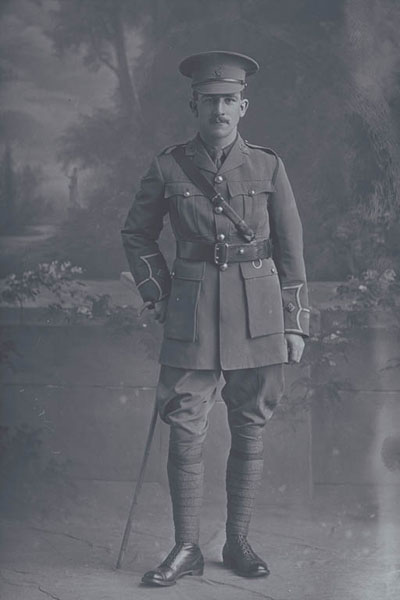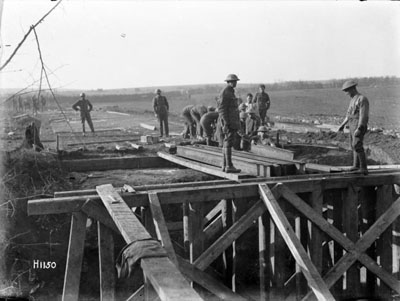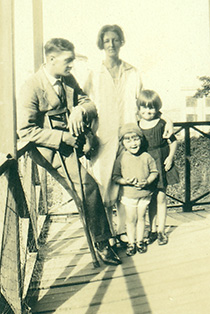Acland Thomas
Born in Auckland in 1888, Lieutenant Acland Withiel Thomas was raised in Epsom, attended Auckland Grammar School and then Auckland University College (AUC) as a non-matriculated student between 1909 and 1911. It is unclear what subjects he studied at AUC as his name was not found in the College Calendars and he does not appear to have been involved in college activities, unlike his younger brother Norman Thomas. However, as the eldest son of Professor Algernon Thomas, one of the College’s first four professors, Acland Thomas also had close family associations with the College.
Active service
Acland Thomas was in England when war broke out and he was among the first batch of eager New Zealanders to enlist for active service at the High Commission in London.1 His enlistment form records his occupation as architect and civil engineer and he was assigned to the British Section of the (New Zealand) Field Engineers.2 The Field Engineers were the tradesmen of the battlefield, responsible for building bridges and defensive positions, clearing barbed wire and the difficult task of clearing enemy explosives from bridges and dugouts.
While transporting water to troops on the front line on Gallipoli on 29 April 1915, Thomas was hit by a bullet which fractured his right thigh and left wrist. His injuries were severe enough that he was declared unfit for duty and he was among the first batch of wounded servicemen who arrived back in New Zealand aboard the Willochra in July 1915. Just over a year later, in August 1916, Thomas had recovered enough to again embark for service overseas, this time as the officer commanding the Signalling Company attached to the 15th Reinforcements. In France he was known as the ‘trench cyclist’ for his habit of riding a bicycle rather than walking on the duckboards through the trenches as his injured leg still troubled him.3 In April 1917, Thomas transferred from the Signallers back to the Engineers and he was injured for a second time in early August, but was back with his unit by the end of the month.4
On 1 October at Crevecoeur, France, a party of Engineers from the 1st Field Company under Thomas’ command 'distinguished itself by building under fire a footbridge across the river to the island, and by repairing a traffic bridge for horses and transport'.5 This earned Thomas the Military Cross for his gallant individual efforts and reconnaissance work under heavy fire.6 In November 1918, on the last day the New Zealand Division was in action, Thomas was injured for a third time when removing charges from mined bridges beyond Le Quesnoy. This time, a shell fragment lodged in his left knee; gangrene set in after the fragment was missed in an X-ray examination and his leg was amputated in early 1919.7
Post-war
After the war, Thomas returned to Auckland where he ran an architecture firm from premises on Shortland Street. In 1920, Thomas married Blanche Smith Peterkin. The couple, who had two daughters, divorced in 1929. In late 1931, Thomas and his young daughters went to Norfolk Island where he produced the Norfolk Island Times.8 Thomas returned to Auckland when his father, Professor Thomas, died in December 1937.9 He later remarried and lived and worked in and around Takapuna and Milford until his death in November 1962.
Katherine Pawley, Special Collections
- Auckland Star, 7 November 1914, p.10, accessed via Papers Past.
- 'Thomas, Acland Withiel – WW1 4/78a – Army', R7825122, Archives New Zealand, Wellington.
- 'Acland Withiel Thomas', Cenotaph Database, Auckland War Memorial Museum, accessed 17 June 2014.
- 'Thomas, Acland Withiel – WW1 4/78a – Army'
- Norman Annabell, ed., Official History of the New Zealand Engineers during the Great War 1914-1919, Wanganui, 1927, p.210.
- ibid.
- 'Acland Withiel Thomas'.
- Correspondence between Ackland Thomas and Norman Thomas, 1933 -1937. Sir Algernon Thomas papers. MSS & Archives A-54, Item 2/2/1, Special Collections, University of Auckland Libraries and Learning Services.
- ibid.





